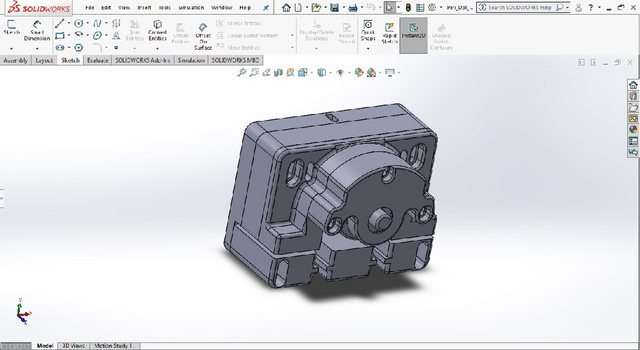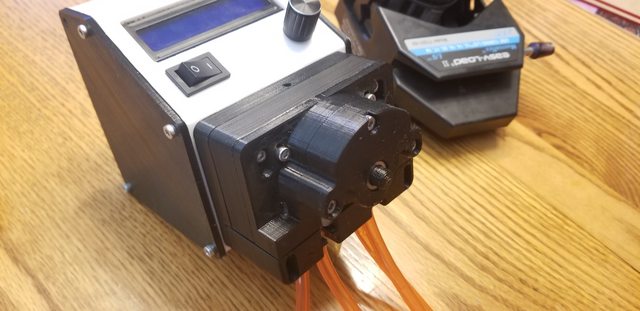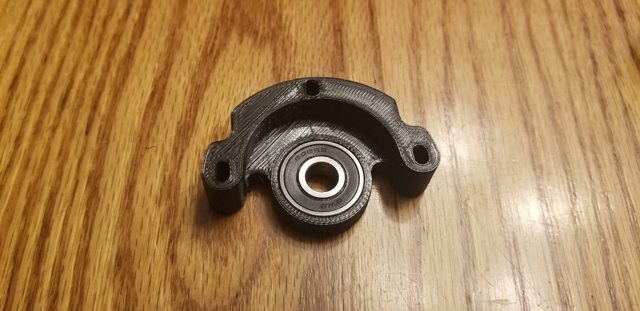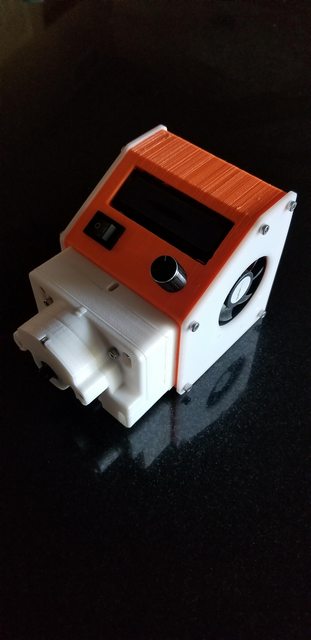Couple of weeks ago I got an idea in my head that I've been playing around with. The idea was to make a dosing pump that's Arduino/Raspberry Pi controlled. I just like the idea to be able to customize it completely and have total control over it. And maybe be able to save some money as well.
My plan is to design and then 3d-print the peristaltic pump heads and mount them on stepper motors, either Nema 14 or Nema 17. I have a 3d printer at work that I can use. For rollers the idea is to use standard steel ball bearings to achieve a good low friction movement against the hose inside the head.
Printing your own pump heads gives the possibility to use different hose thicknesses depending on the amount of flow needed. Using a thinner hose gives a higher precision on smaller volumes. Thicker hose means quicker dosing of larger amounts. For example, a hose with id 4mm holds 3.7ml of fluid per 10cm. A hose with id 1mm holds just 0.25ml per 10cm. With a stepper motor that would give the possibility to dose even very small amounts equally spread over a whole day in theory. Using micro stepping, a stepper motor is virtually silent as well so it won't be a nuisance if it's running for longer periods of time.
I just did a quick run down of costs for all the materials needed and for a 6 head dosing pump (as an example) the cost would probably be a bit under $200. Including pumps, controller (R-Pi + drivers), housing. That's about double of a Jebao of the same size and under a fourth of what three DOS pumps would cost you. Quality wise it would be a lot closer to a DOS than a Jebao.
Before I run any further down the rabbit hole with this project I just wanted to run it past all of you. Anyone done a similar project? Any pitfalls you can see? Any functionalities that you would add or that you are missing from commercial dosing pumps? My own experiences with dosing pumps are very limited at the moment (=zero )..
)..
My plan is to design and then 3d-print the peristaltic pump heads and mount them on stepper motors, either Nema 14 or Nema 17. I have a 3d printer at work that I can use. For rollers the idea is to use standard steel ball bearings to achieve a good low friction movement against the hose inside the head.
Printing your own pump heads gives the possibility to use different hose thicknesses depending on the amount of flow needed. Using a thinner hose gives a higher precision on smaller volumes. Thicker hose means quicker dosing of larger amounts. For example, a hose with id 4mm holds 3.7ml of fluid per 10cm. A hose with id 1mm holds just 0.25ml per 10cm. With a stepper motor that would give the possibility to dose even very small amounts equally spread over a whole day in theory. Using micro stepping, a stepper motor is virtually silent as well so it won't be a nuisance if it's running for longer periods of time.
I just did a quick run down of costs for all the materials needed and for a 6 head dosing pump (as an example) the cost would probably be a bit under $200. Including pumps, controller (R-Pi + drivers), housing. That's about double of a Jebao of the same size and under a fourth of what three DOS pumps would cost you. Quality wise it would be a lot closer to a DOS than a Jebao.
Before I run any further down the rabbit hole with this project I just wanted to run it past all of you. Anyone done a similar project? Any pitfalls you can see? Any functionalities that you would add or that you are missing from commercial dosing pumps? My own experiences with dosing pumps are very limited at the moment (=zero






















